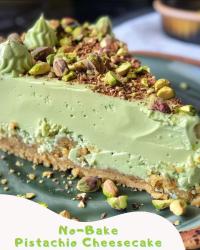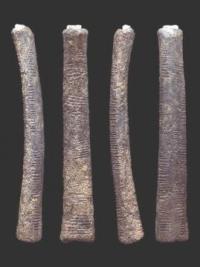Copy Link
Add to Bookmark
Report
HOMEBREW Digest #3353

HOMEBREW Digest #3353 Fri 16 June 2000
FORUM ON BEER, HOMEBREWING, AND RELATED ISSUES
Digest Janitor: janitor@hbd.org
Many thanks to the Observer & Eccentric Newspapers of
Livonia, Michigan for sponsoring the Homebrew Digest.
URL: http://www.oeonline.com
Contents:
Re: Corn Malting? ("J. Kish")
BT and Promash (JohanNico)" <JohanNico.Aikema@akzonobel.com>
Oh Del, not again ("Stephen Alexander")
Fermenting in Cornies ("Graham Sanders")
A-B and the Guy Who Smashed His Hand ("John or Barb Sullivan")
Re: Hazelnut ("Philip J Wilcox")
re: 6 row malt/polyclar ("Nathaniel P. Lansing")
Retraction Of Invite ("Phil & Jill Yates")
Mulberry/Split Batch (John Varady)
Liquid vs. dry yeast (for newbies) ("Jay Hummer")
cream ale yeasts ("Dave Sapsis")
Ferm. in cornies ?'s ("Whyman Dental Lab, Inc")
Let's settle the differences Phil ("Dave Edwards")
RE: Schlitz (Bob Hall)
Diptube Positioning (mohrstrom)
Schlitz (Brad McMahon)
6 row malt (Bill.X.Wible)
Re: 6 row malt (Jeff Renner)
RE: fermenting in cornies (LaBorde, Ronald)
Bottle cap labels ("Jim Verlinde")
hsa ("St. Patrick's")
RE: Cream Ale Yeast (Scott Abene)
Re: BT Back Issues? (Matthew Arnold)
Cream Ale Yeast (Bill.X.Wible)
BT Back Issues ("Paddock Wood Brewing Supplies")
Del $ SA's brew-ha-ha (William Graham)
Beer Clip Art (Bill.X.Wible)
RIMS Question ("Raymond Lowe")
* Don't miss the 2000 AHA NHC in Livonia, MI
* 6/22 through 6/24 http://hbd.org/miy2k
* Beer is our obsession and we're late for therapy!
Send articles for __publication_only__ to post@hbd.org
If your e-mail account is being deleted, please unsubscribe first!!
To SUBSCRIBE or UNSUBSCRIBE send an e-mail message with the word
"subscribe" or "unsubscribe" to request@hbd.org FROM THE E-MAIL
ACCOUNT YOU WISH TO HAVE SUBSCRIBED OR UNSUBSCRIBED!!!**
IF YOU HAVE SPAM-PROOFED your e-mail address, you cannot subscribe to
the digest as we canoot reach you. We will not correct your address
for the automation - that's your job.
The HBD is a copyrighted document. The compilation is copyright
HBD.ORG. Individual postings are copyright by their authors. ASK
before reproducing and you'll rarely have trouble. Digest content
cannot be reproduced by any means for sale or profit.
More information is available by sending the word "info" to
req@hbd.org.
JANITORS on duty: Pat Babcock and Karl Lutzen (janitor@hbd.org)
----------------------------------------------------------------------
Date: Wed, 14 Jun 2000 22:18:41 -0700
From: "J. Kish" <jjkish@worldnet.att.net>
Subject: Re: Corn Malting?
Brewsters,
Keith Menafy asked if anybody has malted corn.
After the corn is malted, and it's time for mashing,
does anyone know what temperatures it would take for
conversion of starches to sugars in the corn-malt?
Different than Barley, probably higher? Just curious.
Joe Kish
------------------------------
Date: Thu, 15 Jun 2000 07:22:33 +0200
From: "Aikema, J.N. (JohanNico)" <JohanNico.Aikema@akzonobel.com>
Subject: BT and Promash
Hi ,
I'm considering buying the Promash program. Has anyone (outside the USA) any
good or bad experience with this program?
In answer to Don Lake (#3352): I did receive the announcement, I was
entitled to some backissues, but I'm still wating!
Greetings from Holland, Hans Aikema
http://www.hopbier.myweb.nl/
------------------------------
Date: Thu, 15 Jun 2000 05:40:38 -0400
From: "Stephen Alexander" <steve-alexander@worldnet.att.net>
Subject: Oh Del, not again
Nathaniel P. Lansing re Subject: advice or opinion
>frequently, 1 time a week perhaps, a new brewer asks
>about how to improve his all-grain efficiency. [...]
The cost of the lost efficiency is very low on HB scale
and that over extracted mash bills produce inferior beers.
Channeling and quick sparge is often an issue. No-mashout's
lower temps exacerbate the quick sparge problem but does not
cause it.
Mashout is according to [M&BS pp 293, Shur, Pfenniger,
L.Narziss, EBC 14th Cong, p149, Envoldsen, JIB 80,
p520] and a lot of others unlikely to be responsible for a
newbies 20%-35% extraction shortfall. I'd tell them that too
if they asked.
>Any *harm? no. Any help? doubtful.
My comments about no-mashout were not aimed at newbies with
extraction problems as Del well knows.
==
>Steve maybe didn't understand my post on dextrinization ...
I frequently fail to understand posts with premises that violates
every text on enzyme kinetics. It's in error.
Mashout/foam -
Let's cut this short. The discussion has progressed nowhere since
Del objected to my observations in March. He continues to
regularly mischaracterize my posts as in #3277, #3282,
#3285, #3287 and others and refuse to divulge basic info or
answer my requests for clarification of the paper on which he
bases his argument.
This is my last post on the topic. I'm with Huber Hanghofer. There are
other factors beyond mashout involved. Del ignores this.
>I extrapolated nothing.
Del in #3300
Steve>>missing is support for the claim the mashout temps
(76+C) are NECESSARY for adequate foam.<<
Del>> [...] What you say may be 'adequate' foam without mash-out your
pro-lit says will see foam positive effects at 72C mash-out temps;
supporting my allegations.
That is extrapolation plain and simple. He assumes the applicability of the
experimental result to differing conditions.
>My very first statement still stands, a mash out at 71C+ improves head
>retention. You are trying very hard to explain that away but [...]
No I am not explaining it away, I am trying to get YOU to add proper
context. It is NOT an experiment of MASHOUT and no one does a
90'@75C mashout, also other conditions differ from conventional mashes.
>Nope, let me quote Tom Flores, [...]
It is Del's misunderstanding of the term "optimal" that causes
confusion I think. I don't disagree w/ Mr.Flora's comments.
> Mash-out is raising the saccharification temperature, for what
>ever end result the brewer desires.
So 60C to 70C is mashout - get real.
>._And_if mash-out is so inconsequential; how come you can find so
>many references of what the temperature should be?
Commercial brewers want the extra 2%-5% extraction
and faster lauter.
>Measured CPF of sweet wort, CPF and adhesion in finish beer in commercial
>sized trials.
Did they also mash the for 20'@60C+90'@75C vs 20'@60C+90'@68C.
HOW did they control for the dextrins and ethanol which have foam impact ?
Without control it says little.
>Now you agree the 150 mg/L Ca++ adjusts the pH. 5.5 is not that atypical,
You are *assuming* that the experiment achieved the same pH. We don't
know that, not the impact of pH diffs.
>OK, first order kinetics would have the reaction rate slower at
>that dilution,
Unless water is a reactant as in hydrolase activity, then it could
increase or decrease the rate. Same with pH impact.
===
>You have other questions that may be answered in Hubert's post in #3336.
No , but I especially like his judicious opinion
HH<<My humble opinion: Such a rest may or may not have an effect
on your brew, though the effect may be very significant! -- Like
everything protein-related, it much depends on the quality of
your malt.>>
Exactly my point tho' I could add to the list of variables. You can't say
mashout *will* improve this beer without understanding much more of the
issue, Del.
====
> I_extrapolated_nothing_.
It's NOT a study of MASHOUT. That is the first extrapolation.
>You said the pH was unadjusted, the grist/water ratio is not normal, the
>grind was atypical. So you did try to refute the findings of the Inst.
How illogical. The experimental methods, as described by Del, follows
Congress methods and so are unlike conventional brewing in several
ways. To reiterate this fact does not dispute the study and particularly
says nothing at all of the "findings".
>If congress mashes are so irrelevant ...
Congress mashes for malt analysis can *only* be validly used to
compare malts analyzed under like conditions They CANNOT
be used to directly compare to actual brewing conditions. You'll
find a similar statement in several books on the subject.
>>>>4/ I am NOT an advocate of no-mashout brewing in general, despite the
> mischaracterization.<<
Del posted:
>from #3273...
>>The problem with no-mashout is not that the average extraction
>extraction, but 4 times out of 5 the actual extraction change is quite
>[...]
Del MISQUOTED me. In #3273 I ACTUALLY wrote
>>IMO mashout *does* significantly improve the consistency of the
>>extraction, but 4 times out of 5 the actual extraction change is quite
>>[...]
>I see you don't specifically denounce "mash out"
In fact I advocate mashout for it's consistency in the actual quote.
Something Del has repeatedly misstated.
===
>So which is it? significant or quite small?
The range of diff values was large compared to the small standard
deviation. Why is that so hard to understand ?
===
>The fallacy in your experiment
Experiments don't have "fallacies".
>is you altered a second
>parameter, the lauter rate. If all parameters were kept the same
You often cannot keep all the parameters the same. If
you don't alter the lauter rate you WILL alter the wort
extraction. Find a book on experiment design -
you're in the weeds.
>there would be some validity to your conclusion.
What conclusion ? I merely have stated that I have gotten
entirely normal head without mashout as an observation.
You have objected to this on the basis that the foam may be
adequate but would be improved with mashout. Something
you cannot know except by extrapolation.
===
>I will be posting the results of another mash experiment
>[...]
> The only variable is one was not mashed out.
>
>If there are any falacies in this let me know [...]
There is so much wrong here it is beyond serious
consideration. How about getting some background
and an unbiased experimenter.
===
Sincerely best of luck Del. Maybe I can buy you a beer next
time I'm in the 'burgh and we can talk about something other
than foam. This discussion is going nowhere fast and I'm
outta here.,
-S
------------------------------
Date: Thu, 15 Jun 2000 20:51:21 +1000
From: "Graham Sanders" <craftbrewer@cisnet.COM.AU>
Subject: Fermenting in Cornies
G'day All
To all those who have it happen to you, I now know how you feel being cut
off or cut all together off the HBD. Must keep the topic beer related and
not drift off to thoughts of football and other areas (even though I see
football quite beer related) or this one wont make it either. Thank god I
wasn't thinking about other night time activities at the time or I would
have been black banned.
Back to Beer. Just to give an idea on fermenting in soda kegs, I do
something very similar to take advantage of the SS, and the room saving in
the fermentation fridge. I brew 38 litre (10 gallon to the heathens). I use
two 22 litre soda kegs (if your maths are up to date thats 18 litres per
keg) as my fermenters. This gives me the necessary head space, but I
modifly the kegs differently.
I remove all the gear, valves, dip tube, ect. I plug these holes up with
silicone, (one I have already welded up as well), leaving just the lid hole.
Now I attach a tap right at the bottom of the keg, and there you have it, my
fermenter. The lid is a plate of glass that just sits on top of the
opening, nothing more. This way you can look at your beer fermenting
without lifting the lid.
"But its not Air tight" will be the cry. Yes that right, but does it need
to be. The keg will be in the fridge, which is a sealed unit. Also the
fridge will lower the humidity right down. End result, the risk of
contamination is no greater than any other fermenter. (are petre dishes air
tight). As scientific as this statement is (wait for the flames) used this
method for now 4 years, haven't had a bad batch yet. Its been so
successful, its gaining popularity throughout our homebrew club.
Other advantages of this, easy to move, and you can skim your beers if you
so desire.
I have pictures of this set up, but no web site. Anyone wanting photos of
this I am more than happy to E-mail them to you.
Shout
Graham Sanders
------------------------------
Date: Thu, 15 Jun 2000 06:12:47 -0500
From: "John or Barb Sullivan" <sullvan@anet-stl.com>
Subject: A-B and the Guy Who Smashed His Hand
Jeff writes:
>Also, does anyone know what ever happened to the guy who smashed his hand
>in the doors of the freight evelator while on the tour of the A-B pilot
>brewery? I wonder if he now owns a bunch of A-B stock?
He's alright. Saw him at the last Brews meeting. Had he been suing A-B, I
doubt that we would see him ever again. A-B was, and always has been,
fantastically helpful and generous with our club.
>BTW, Phil, the A-B guy who gave the presentations and tours was named
>Steve Michlak (sp?, sounds like mish-lack).
Stephen Michalak to be exact. It is a name that's much more appropriate
than Dr. Budwiper. As a moniker applied by someone who was there, I'm
surprised. The man barely had time to have lunch with us because a core
group of non-St. Louis brewers were on him like stink on sh*t. You'd think
it was the second coming or something.
If there are any clarifications needed to anything he said, please let me
know and I'll see if I can get him to respond.
John Sullivan
>From St. Louis the Beer Comedian's Wasteland
------------------------------
Date: Thu, 15 Jun 2000 08:44:00 -0400
From: "Philip J Wilcox" <pjwilcox@cmsenergy.com>
Subject: Re: Hazelnut
Mark T reflects on old Hazelnut brews.
HA! I too was bitten by the Sam Adams Longshot Beers. My first all-grain ever
was a clone I called Frogshot Hazelnut. To further complicate the issue I
created this brew at my Aunt and Uncle's new house. He is a wine maker after-all
and they have to be used to the mess. (yea right. Now I know why the winery and
lab are in the basement. Its not so that he could get the temperature and
humidity control like I thought. Its to get it as far out of the kitchen as
possible!!!) Lesson learned: Don't make beer in other peoples new kitchens! Your
in deep deep water even if you don't boil-over!
My disaster was leaving my corona mill at home. We drove around for an hour to 2
different shops and neither had a mill or one for sale. I tried the coffee
grinder, the blender, the quisanart, the mixer and finally the rolling pin and a
garbage bag, the rolling pin and a ziplock and then the rolling pin and my
pillowcase. Two hours later I had hand crushed 10lbs of grain. What a PITA! I
haven't used a rolling pin since. For grain crushing anyway.
I too decided that the Hazelnut was too overpowering. But since my uncle had a
wine lab I got out the graduated cylinders and a pipette and went about it very
scientifically. I use three different people besides myself as a taste panel and
used Goose Island Brown Ale as the test beer. What did they all settle on? What
did all the #crunching come up with. Exactly 1 oz of extract in a 5 gal batch.
All that work just to cut the recipe amount in half!
The brew went well, especially for a first all-grain, but then again those were
the days when I wrote out 45 point instructions lists to tell me exactly when
and what to do. Very anal retentive, but also very helpful for beginners. I had
a floating thermometer, my uncle got out his pH meter and did the adjusting of
the sparge water for me. He also got out his sucrose calibrated hand
refractometer that wasn't the least bit accurate, Still haven't figured out that
one yet. But it went well. No boilovers, extract was 65% abysmal but better than
I feared from my lousy crush. I had a few drips from a leaky spigot, but I
managed to keep most of the wort off the floor and stove.
I just moved out of my first house and tomorrow I get to move into the new one.
Among the bottles of Vintage beers I found was a 22oz bomber of Frogshot
Hazelnut, complete with the original label taped to the bottle. Mark, ill bring
mine if you bring yours!!!!!
I hope to see you all at MIY2K next week!!! PS. Anybody who wants to help move
me in on Saturday is welcome to come over and preview the beers Ill be taking to
the conference!
Phil Wilcox
Poison Frog Home Brewer
Warden-Prison City Brewers
In Jackson, MI 32 Mi. West of Jeff Renner
AABG, AHA, MIY2K, BJCP, HBD, MCAB II, ETC., ad nausium...
See our languishing and outdated website at http://hbd.org/prisoner
------------------------------
Date: Thu, 15 Jun 2000 09:21:36 -0400
From: "Nathaniel P. Lansing" <delbrew@compuserve.com>
Subject: re: 6 row malt/polyclar
Craig Lefevre asks:>> I would like to brew a clone of Ballantine IPA which
specifies 6-row
>malt. 6-row malt isn't available in this area. If 2-row were substituted
for
>6-row malt what effect would it have on the beer and if so could this be
>easily overcome?<<
How fortuitous, you caught the recipe digest #3352 right? Look anything
close to your recipe? If you use North American 2 row with a diastatic
power of 110-120 you will be OK. _Sometimes_the continental 2 rows,
at <80 DP, just don't have the strength to convert the corn grits, it
depends
on the temperatures/times of your mash program. At a
DP of 110-120 the N. American malt can easily handle 30% adjuncts.
And don't be afraid of the sugar addition to the boil, it seems to add
the "certain something" that makes an IPA an IPA.
....................................
re: Polyclar, There are many grades, A, AT, V, and VT, and more. Some must
be filtered, some do not need filtering. Polyclar A, most commonly
available
does not require filtering. Polyclar A is no longer produced but its'
replacement will also not require filtering. The difference in the
formulations
is only a matter of particle size, the larger particle sizes settle
rapidly, the
submicron sizes do not settle, work more rapidly and require filtering.
To utilize Polyclar to its' fullest it must be in suspension, which means
stirring it to resuspend it at least once a day. It won't do any good
resting
on the bottom of the carboy. Rumour has it that Polyclar fits into German
Rheinheitsgebot (sp?) because after filtration there is zero (nada) added
to the beer. Excessive amounts will remove hop bitterness, follow the label
directions as to dosage.
N.P. Lansing
------------------------------
Date: Thu, 15 Jun 2000 23:28:22 +1000
From: "Phil & Jill Yates" <yates@acenet.com.au>
Subject: Retraction Of Invite
As Baron of Burradoo it is not often that I take pity on some poor soul and
offer up the premises nor my extensive brewing facilities for the purpose of
experiment or vindication for self serving scientifically minded brewers.
But I did this for Steve Alexander.
And in response he offers me this back hander :
>Phil Yates posts something vaguely related to beer and >brewing for a
change
Followed by this kick below the belt :
>It's 'no' Phil. Perhaps you missed the bit where the >brewer was to be
>unbiased and impartial.
I never said I intended to be judge. I was simply offering Burradoo Estate
as a remote brewing sanctuary where you and Doc Pivo could fight it out to
the finish. And as you have exposed yourself as a man inclined to wager, I
thought you might be interested in the extensive gambling facilities
available here at the Estate.
The invitation to you is retracted. I can only suggest you take up a wager
with Dave Edwards of South Australia who is foolish enough to think that the
Crows could ever possibly win another Grand Final!
And I'll bet Dave drinks Southwark and West End dishwater!!
May God Be With You Both
You Hard Headed Beetle Crushers!!!
Phil
------------------------------
Date: Thu, 15 Jun 2000 09:38:56 -0400 (EDT)
From: John Varady <rust1d@usa.net>
Subject: Mulberry/Split Batch
Steve Lane asks about mulberries in beer. I'm in the process of making a
sour mulberry beer. It started out as an Alt, but I used pilsner yeast to
ferment it. I then let it sit until bright. I then racked 4 gallons on top
of 12 lbs of mulberrys from last springs harvest. After about 2 weeks, I
racked the brew off into a five gallon carboy. Several weeks later, I
pitched a starter of Brettanomyces lambicus and added a quart of 1090 tripel
wort, already fermenting with chimay yeast, to the fermenter for food. Next
step is to rack it on top of this years mulberry crop. I've already
collected about 12 lbs this season (4 lbs fit in a gallon zip lock - I've
got 3 gallons in the freezer). I think this time I'll let the fruit remain
in contact with the beer much longer and let the brett yeast have it's way.
It's interesting so far, with slight sour/pie characteristics.
To harvest, I lay a sheet on the ground under a heavy loaded branch and
shake it to drop the berrys. I do this every two/three days.
I've also made a mulberry mead - very dry, and a mulberry cider - 4 lbs in 3
gallons of fresh cider. I didn't use the best yeast on the cider and it has
a sulfur character that some people (Shill) can't seem to get past.
- --
Here's a CAP recipe that won BOS recently. Note: This same grain bill also
made 3 gallons of tripel! Read on...
Name: Skull Cap O.G.: 1.053
Style: CAP I.B.U.: 30.2
Volume: 11.0 Gallons A.B.V.: 5.3%
Grains/Fermentables Lbs Hops AAU Grams Min
Pale, American 2 Row 20.00 Cluster 6.9 56.00 90
Corn, Stone Ground 7.00 Liberty 3.8 30.00 15
Munich, Belgian 2.00 Liberty 3.8 30.00 0
Cara-pils, American 1.00
Crystal Light, German 0.50
Biscuit, Belgian 0.50
Add Corn Meal to 2.5 gallons water and mix up good. Add 3 lbs malt to rest @
135F. Stir and boost to 156F. Rest for 20 mins. Bring to boiling and boil for 20
mins. Meanwhile, heat 8.5 gallons water to 155F and mash in remaining
20 lbs malt to hit 145F. Rest for 15 mins and boost to 154F by adding cereal
mash. Rest for 60 mins. Drain mash tun completely to collect 7 gallons.
Split this into two portions and boil 3.5 gallons seperately as a tripel.
Batch sparge mash with about 8.5 gallons to collect 12 gallons in to CAP
kettle. Boil, chill, and pitch.
Ferment in chest freezer @ 50F for 2 weeks, boost up by 4 degrees a day
until 68F reached, rest two days and drop by 4 degrees a day until 26F
reach. Lager until it hurts.
Hodgson Mills Stone Ground Whole Corn was used. No problems with head from oils.
BTW, the tripel wort was boiled down to 3 gallons of 1090 wort (with a
slight addition of cane sugar) and fermented with chimay yeast. It is
fantastic and ready to bottle. I did this trick of "stealing" several
gallons of first runnings to make a strong beer on several batches this
spring - all strong belgians (chimay yeast in the hous'). Just boost the
grain bill a bit to compensate. Another good trick is to keep the dark
specialty grains out of the mash until sparge time. This way they don't
overpower the first wort.
Also BTW, my BOS CAP was filled straight from the cobra tap the morning of
the comp after being force carbonated the night before. Other than cold
bottles, no special precautions were taken.
Chew on that,
John
John Varady The HomeBrew Recipe Calculating Program
Boneyard Brewing Custom Neon Beer Signs For Home Brewers
Glenside, PA Get More Information At:
rust1d@usa.net http://www.netaxs.com/~vectorsys/varady
------------------------------
Date: Thu, 15 Jun 2000 06:56:26 -0700
From: "Jay Hummer" <jayhumm@zdnetonebox.com>
Subject: Liquid vs. dry yeast (for newbies)
In Roger's response to Clark on hop & trub removal, he said to make sure
you're pitching enough yeast; and that beginners could use dry yeast
to accomplish this.
What's the deal with liquid vs. dry yeast? I've read that liquid yeasts
are pure strains and produce better beer. So, for my first batch (brown
ale), I pitched White Labs liquid yeast directly into the primary and
it came out fine (it still hasn't carbonated after 2 1/2 weeks, but the
fermentation was complete, there's a little sediment in the bottles and
I remain optimistic). I have a batch of cream ale in the works now that
I used Wyeast -- pitched with no starter. I racked it to a secondary
last night, and it was well fermented. The Wyeast directions said you
should prepare a starter if the recipe's O.G. is over 1.060 (or something
like that).
Should I be using dry yeast until I'm to a point where I don't mind the
added complexity of preparing starters? The directions on the liquid
yeasts make it sound like you don't need to step it up unless your making
heavy beers. Is that true?
What's a newbie to do?
- --
Jay Hummer
___________________________________________________________________
To get your own FREE ZDNet Onebox - FREE voicemail, email, and fax,
all in one place - sign up today at http://www.zdnetonebox.com
------------------------------
Date: Thu, 15 Jun 2000 07:08:49 -0700
From: "Dave Sapsis" <dsapsis@earthlink.net>
Subject: cream ale yeasts
Nat writes:
>The only objection I have against a real lager strain is
>the increased fusel production at the elevated temperatures, if you don't
>suffer fusel headaches the lager strain would be the historically correct
>way to go.
This puzzles me. Wahl and Henius clearly define both Cream Ale and
Sparkling Ale as *top* fermented beers. They were roughly analogous to the
lagers of the time, with the notable exception of pitching yeast and ferment
regime. The fact that Hudpohl and Gennessee saw fit to use bottom yeasts in
their post WWII incarnations doesn't render the earlier history
insignificant.
I am of the opinion that Cream Ales are a true American style, with
similarities to other blonde ales of endemic origins (e.g., Koelsch,
Adelaide Sparkling) and are most accurately represented by using top
fermenting yeast. The style name, Cream ALE, would tend to support this.
Note I dont mean to disuade anyone from making cream ales however they like,
its just that as somewhat of a histrorical beer fan, I think its worth
pointing out that the orginal Cream Ales were clearly ales.
Jeff Renner and I both gave editorial comments to Ben Jankowski's article on
Cream Ale in BT, and in addition to his suggestions for low levels of corn
in the mash (we suggested something more like 20-25%), I also strongly
urged those wishing a more original form to eschew the use of lager yeasts,
and instead rely on the "lagering in the chip tanks" to mellow the esters
and crispen the beer. If others think differently, I think that's probably a
good thing. Total agreement about anything scary.
best,
- --dave, sacramento. Projected temp today: 106F, 41C -- good cream ale
weather.
------------------------------
Date: Thu, 15 Jun 2000 08:10:33 -0600
From: "Whyman Dental Lab, Inc" <whymandl@milehigh.net>
Subject: Ferm. in cornies ?'s
"Mark Tumarkin" asks about fermenting in cornies.
I've been doing this for awhile now and the way I started was to just do
2ndary in the cornie. I do 15 gal batches (20 gal brew pot) so the wort
went into 3 - 6 gal carboys. After primary, I racked into 3 cornies
using a connector on the dip tube side into a CO2 purged keg. With the
connector on the end of the racking cane hose, it's easy to start the
siphon. Push sanitizer through the assembly from one of the kegs that
will be your 2ndary. Remove when the hose is full, then put the cane
into the carboy, drain out the sanitizer into a glass and your siphon is
started when you put the connector onto the keg (2ndary). You need
little head space in 2ndary and you get to watch primary in the carboy.
No need to cut off the dip tube as there is little yeast in 2ndary.
I now do primary in 10 gal cornies (good luck finding then) and I did
cut about an inch off the dip tube. Transfer is much easier. Just use a
short patch hose from dip tube side to dip tube side. No lifting of
carboys for siphoning. Works great.
Good luck and private email for more ?'s is fine.
Rog
------------------------------
Date: Fri, 16 Jun 2000 00:17:14 +0930
From: "Dave Edwards" <eddiedb@senet.com.au>
Subject: Let's settle the differences Phil
Phil wrote some bollox like:
| The invitation to you is retracted. I can only suggest you take up a wager
| with Dave Edwards of South Australia who is foolish enough to think that
the
| Crows could ever possibly win another Grand Final!
|
| And I'll bet Dave drinks Southwark and West End dishwater!!
Mr. Yates, West End? Are you joking? Oh shame Phil, in that you could
possibly think that any homebrewer should pass such vile sewage as West End
past his (or her) lips. However, as you have made this statement I must
apologize, for to have you to take this thus far, I must have deeply
offended your ancestral football roots. Let us be happy with our
differences, enjoy the irrelevance of the codes we support, and drink real
beer. Just to let you know that Coopers is brewed in THIS state, and is the
only commercial SA beer to pass these lips.
As for the Adelaide football club, one must remind everybody that of the
last three premierships, which team has two of them? The Crows gentlemen,
the Crows.
So as I sit here and drink the last bottle of my Midnight Mystery Stout, I
will think of you Phil, and charge my glass in your direction,
Cheers,
Dave.
------------------------------
Date: Thu, 15 Jun 2000 10:48:40 -0700
From: Bob Hall <nap_aca_bh@nwoca.org>
Subject: RE: Schlitz
Wow, I'd didn't know there were other 'old' Schlitz fans. That was my
brew of choice during my Navy days in the late '60s at Pensacola and Key
West. Got back home and the Ohio Schlitz didn't taste as good, so that
relationship ended. Anyone else notice a difference?
Bob
------------------------------
Date: Thu, 15 Jun 2000 10:45:32 -0400
From: mohrstrom@humphreypc.com
Subject: Diptube Positioning
Glen Pannicke's discussion of fermenting in cornies (and cautions of
diptube circumcision)
>>> ... Just don't take off too much tubing 'cause you can't put it
back on. Usually there's a bend in the tube towards the bottom, so you
might be able to adjust that to fine tune the depth.<<<
have reminded me to ask the collective how they keep the @#$% diptube from
rotating as the tank plug is torqued? Is there an effective tool for
holding (without crushing) that skinny tube through the lid opening? Or,
should I keep on pre-positioning it so that it rotates into place (trial
and - lots of - error)?
Mark (chanting "All Hail Pat ...") in Kalamazoo
------------------------------
Date: Fri, 16 Jun 2000 00:27:30 +0930
From: Brad McMahon <brad@sa.apana.org.au>
Subject: Schlitz
Bill Wible wrote:
>There is a good write up about this in the book called "Beer Blast".
>It really wasn't a formula change. The story goes that Schlitz was trying to
>save money and kept shortening their lagering time.
...
>The book says it got to the point that people were finding little green bits
>of goo that looked like mucus in the beer, and it really turned people off.
>(It was yeast sediment)
I know my yeast sediment ain't green! It's a good story and probably
true -
but if a brewery is going to shorten lagering times like that, then they
would have to filter the beer to within an inch of it's life I would
have thought.
So I can't see how yeast would get through IF they were filtering out
the chill
haze. Maybe there was something nasty living in the bottling lines?
Perhaps
they cut back on sanitation?
Brad McMahon
remembering living somewhere near Aldgate, South Australia
------------------------------
Date: Thu, 15 Jun 2000 11:08:36 -0400
From: Bill.X.Wible@QuestDiagnostics.com
Subject: 6 row malt
>From: "Craig Lefevre" <cearll@telusplanet.net>
>Subject: 6 row malt
>
>Hi,
> I would like to brew a clone of Ballantine IPA which specifies 6-row
>malt. 6-row malt isn't available in this area. If 2-row were substituted for
>6-row malt what effect would it have on the beer and if so could this be
>easily overcome? This post probably points out that I am a relatively new
>all-grain brewer (4 batches) and have graduated from lurker to supplicant.
>
>Craig Lefevre - Vegreville, Alberta
Craig,
There is very little difference between 6 row and 2 row malt, at least at a
homebrewer's level.
2 row and 6 row are called that because of the number of 'rows' or kernels
produced by each plant. 2 row has 2 rows, 6 row has 6 rows. Not rocket
science. 6 row, since it produces more kernels is generally cheaper to
produce. 2 row, since there are fewer kernels per plant, is generally of
higher quality.
6 row malt has slightly more enzymes to cut adjuncts. That is why you
see 6 row malt called for in recipes that use corn, rice, or other adjuncts.
Most adjuncts have no enzymes of their own to aid conversion, so brewer's
rely on the enzymes in their malt to do it. Since 6 row has more, they use it.
But 6 row doesn't have much more. Enzyme capacity is measured in
degrees Lintner, and is called Diastatic Power. 2 row's Diastatic power is
usually around 140. 6 row is slightly more, usually about 150. Not enough
to get real excited over. Of course, these numbers can vary according to
the maltster. There were a few posts about maltsters, malt, and malting last
week or so.
I have seen some brewers complain that 6 row causes chill haze, because
it also contains higher protein levels that 2 row. I have not really found this
to
be a problem in CAP's and American Lagers that I have made using it.
We get Breiss 6 row malt here. If you have Vienna malt available to you,
you will probably find that it is made from 6 row malt. But Vienna malt is too
dark in color to make Ballantine. You would use it with Munich malt and 2 row
lager malt to make Oktoberfest.
I would say you could use 2 row in a Ballantine recipe with little to no
difference.
Good Luck, let us know how it turns out.
Bill
------------------------------
Date: Thu, 15 Jun 2000 11:19:12 -0400
From: Jeff Renner <nerenner@umich.edu>
Subject: Re: 6 row malt
"Craig Lefevre" <cearll@telusplanet.net> asks
>I would like to brew a clone of Ballantine IPA which specifies 6-row
>malt. 6-row malt isn't available in this area. If 2-row were substituted for
>6-row malt what effect would it have on the beer and if so could this be
>easily overcome?
Six row is historically autehntic but I wouldn't worry about it if you
can't get it. The differences are minor enough. Two row has slightly less
protein, less enzymes, slightly less husk, slightly more extract. The
enzyme level is still plenty high enough to convert the adjunct starch. I
still like the slight "edge" I think six-row gives to the character in an
adjunct beer.
Jeff
-=-=-=-=-
Jeff Renner in Ann Arbor, Michigan USA, c/o nerenner@umich.edu
"One never knows, do one?" Fats Waller, American Musician, 1904-1943.
------------------------------
Date: Thu, 15 Jun 2000 10:39:33 -0500
From: rlabor@lsumc.edu (LaBorde, Ronald)
Subject: RE: fermenting in cornies
From: "Mark Tumarkin" <mark_t@ix.netcom.com>
>...First of all, what do you do about a
>fermentation lock and/or blow-off? I know some people just remove the
poppet
>valve and put a tube over the stem. Seems to me that this could be plugged
up
>by blow-off fairly easily....
I have been removing both in and out fittings and tubes. I cover one post
with a small square of aluminum foil, then place a small "o" ring (removed
from the fitting) over the foil and post. This actually makes an air tight
seal. On the other post, I push a piece of vinyl tubing over the threads
and use a plastic tie-wrap to secure it down and also make it air-tight. I
place the other end into a jar of water.
Actually, if I am transporting the newly pitched fermenter (like when we do
a club brew), I cover both posts with the foil, then put the tubing on when
I get home. One of the greatest reasons to not use glass!!!!
>...And what size batches do you brew and how many
>cornies do you use? Seems that a five gal batch would fill a corny pretty
>close to the top (or a 10 gal batch would fill 2 cornies) and so blow-off
>would be a big problem through a small opening....
That seems likely, but when you think about the geometry of the corny verses
the carboy, the carboy narrows like a funnel at the top almost speeding up
the blowoff. The shape of the corny does not have this effect, and in my
case, blowoff has not been a problem. I might get 1 or 2 pints into the jar
which is acceptable.
>...Also, have you cut the beer-out dip tube? and if so, how much? Seems
like trub
>at the bottom of the primary varies considerably from batch to batch -
>depending on beer style, yeast used, etc, etc. How do you handle this?...
No, I have removed the tubes. I just rack with a cane, or 3/8 od tubing
with no cane but a cane cap.
When I get around to it I would like to try pulling with a vacuum into the
next keg, but I still would use the racking out of the fermenter. I like the
vacuum idea because it would help remove the oxygen out of the receiving
keg. I just don't trust CO2 flushing.
I have not had a plugging problem with the small opening, I suppose in
theory it could happen. I have the other post covered with a foil/"o" ring,
so there is a release mechanism there. I just do not think a SS keg would
give out before the plug. Could be wrong here, dunno.
I do 5 gal ferments in 5 gal cornies, but sure like the idea of the 10 gal
cornie. I would buy one if I could see it first.
Ron
Ronald La Borde - Metairie, Louisiana - rlabor@lsumc.edu
http://hbd.org/rlaborde
------------------------------
Date: Thu, 15 Jun 2000 11:58:29 -0400
From: "Jim Verlinde" <beans@voyager.net>
Subject: Bottle cap labels
While catching up on past HBD postings I noticed that there was some
interest in a source for bottle cap labels. Two years ago I located a
company in Omaha that would sell me blank .787 inch circle labels on 8.5 x
11 laser/inkjet stock. The company's name is Acclaim and they have a
website: www.acclaimid.com . Their phone number is 800-676-5501. I don't
remember the price I paid but felt it was reasonable at the time. The only
downside was the minimum order quantity of 250 sheets. With 108 labels per
sheet, that's a lot of beer!
Hope this helps.
Jim Verlinde
Primetime Brewers Club
Grand Rapids, MI
------------------------------
Date: Thu, 15 Jun 2000 11:13:28 -0500
From: "St. Patrick's" <stpats@bga.com>
Subject: hsa
The tour with Dr. Budwiper stirred the hsa kettle again.
The reality is that the importance of hsa was always controversial in
professional circles. I don't recall the references but the early research
showed an effect under controlled laboratory brews, but 2 of the 3 tests
done in a real brewery showed no effect. If I recall correctly, they
brewed beer under a blanket of N2 and compared to usual ambient conditions.
Since brewing scientists can't reach a consensus on the importance of hsa,
I'd be disappointed if homebrewers did.
Bud may not be the best commercial beer to evaluate hsa with. A-B has long
had the reputation, well-deserved btw, for rotating stock faster than any
major brewer. That's why A-B is able to beat all the small brewers over
the head with this freshness ad campaign. Their not doing anything
different than they did 25 years ago but it became fashionable thanks in
part to small brewers.
Lynne O'Connor
St. Patrick's of Texas
Brewers Supply
1828 Fleischer Dr
Austin, Texas 78728 USA
512-989-9727
www.stpats.com
------------------------------
Date: Thu, 15 Jun 2000 09:19:25 -0700 (PDT)
From: Scott Abene <skotrat@yahoo.com>
Subject: RE: Cream Ale Yeast
Bill2112 asked >>I've narrowed it down to the following
(all wyeast):2072,2035,1056,or 1272. Personally, I'm incline to go
with the
2072 or 1272 but, any feedback would be appreciated. <<
2035 is my cream ale yeast of choice.
Great stuff
=====
ThE-HoMe-BrEw-RaT
Scott Abene <skotrat@mediaone.net>
http://www.skotrat.com (the Homebrew "Beer Slut" page)
"The More I know about beer politics, The more I wish I made 120k"
__________________________________________________
Do You Yahoo!?
Yahoo! Photos -- now, 100 FREE prints!
http://photos.yahoo.com
------------------------------
Date: Thu, 15 Jun 2000 11:57:44 -0500
From: Matthew Arnold <revmra@iname.com>
Subject: Re: BT Back Issues?
>What's the status of all you folks who ordered back issues after BT went
>"kaputt"? Did you receive them or are you still waiting? Are they
>still offering the back issues? I was about to order online sometime
>ago and held off because of many posts complaining that the orders were
>not being filled.
Still waiting . . . and not holding my breath. If they aren't here after about
3/4 of a year, I don't ever expect them to be here. The only time I care about
this is when I go to my homebrew club meetings and see the guys that I helped
convince to subscribe to BT not months before it closed its doors. Thankfully,
those guys are very understanding about the whole situation so it's a
non-issue. _I_ still feel like a moron. Of course, I also resubscribed for two
years right before they went under so I lost as much as anybody did.
My $.02? Don't order the back issues. God only knows if there even ARE any back
issues left to order!
Matt
- -----
Webmaster, Green Bay Rackers Homebrewers' Club
http://www.rackers.org info@rackers.org
------------------------------
Date: Thu, 15 Jun 2000 13:20:52 -0400
From: Bill.X.Wible@QuestDiagnostics.com
Subject: Cream Ale Yeast
True CreamALes are a hybrid. The last one I did, I split a 6 gallon batch
and fermentted half with Wyeast 1056, the other half with Wyeast 2035.
So I did half as an ale, half as a lager. I fermented the ale at room temp
(~60 - 70 degrees F) and the lager with a 'normal' lager schedule, i.e.
primary at 50 degrees F for 2 weeks, secondary at 50 degrees F for
2 weeks, reduce to ~35 degrees F, lager for about 3 to 4 weeks.
When fermentation was finished, I combined the 2 beers.
I liked it, and it got a 33 in competition from David Houseman, who is a
BJCP Master Judge. The comments were that it was very light and clean.
This is something to try if you're feeling adventurous.
Bill
------------------------------
Date: Thu, 15 Jun 2000 11:29:58 -0600
From: "Paddock Wood Brewing Supplies" <orders@paddockwood.com>
Subject: BT Back Issues
Donald asks about the status of BT back issues.
A while back I received some back issues that I ordered.
I don't think I got all that I requested, but they may simply have been out
of stock of what I was requesting. I think I elected to forgive any
outstanding debt.
We still have a very limited selection of BT back issues in stock. Perhaps
we have one or two that you are looking for?
www.paddockwood.com/catalog_books.html#BT
best of luck,
Stephen
______________________________________________
Paddock Wood Brewing Supplies, Saskatoon, SK
orders@paddockwood.com www.paddockwood.com
------------------------------
Date: Thu, 15 Jun 2000 12:09:47 -0600
From: William Graham <w.graham@citr.com>
Subject: Del $ SA's brew-ha-ha
Greets, o zymurgistas
"Nathaniel P. Lansing" <delbrew@compuserve.com> cruelly teases:
> And for your further reading pleasure:
> No I won't be posting the results of my mash-out vs no mash-out
> experiment.
> That decision is spurred by a private email I received and it matters
> not
> what the results are.
Now wait just a dad-blasted minute here! You and SA rant and rave for
upwards of a week or so, sucking up bandwidth, and you NOW you decide to
take the debate off-line?? You guys go at it mano a mano, loudly and
brashly,in front of all, and THEN go for the final round behind closed
doors??? Might I suggest if you guys start a big "discussion" on-line,
in front of everybody, that you finish it on-line, in front of
everybody. Some people I know would call this cowardice. Frankly, you
owe us an apology for **NOT** publishing the results of your experiment
on this forum which you so cavalierly filled up.
Bill, pissed off that I read all of these discussions, and now I won't
know how it ended up.
Notice that there are NO smiley faces in this post.
- --
William Graham
Senior Software Engineer
CiTR, Inc.
4750 Walnut Street, Suite 106
Boulder, CO 80301
303.417.0575 x27
------------------------------
Date: Thu, 15 Jun 2000 14:21:15 -0400
From: Bill.X.Wible@QuestDiagnostics.com
Subject: Beer Clip Art
>Date: Wed, 14 Jun 2000 10:08:29 -0500
>From: "Michael O. Hanson" <mhanson@winternet.com>
>Subject: Clip Art for Beer and Wine
>
>Does anybody out there know where I can find clip art related to brewing
>and winemaking?
I would also like to get some beer related images and clip art. I am taking
an HTML class, and would like to do a 'beer' page for my final project. Of
particular interest to me would be an animated beer colored background
with little bubbles that rise up every so often. I can't be the only one who
thought of this, it has to be out there.
Any help would be appreciated.
Thanks!
Bill
------------------------------
Date: Thu, 15 Jun 2000 16:22:11 -0400
From: "Raymond Lowe" <WRLowe@worldnet.att.net>
Subject: RIMS Question
I have been slowly building a RIMS. It is just about ready for the first
batch. The question I have (it may be trivial) is related to the valve that
I will control the flow of the wort with. Some of the guys in my club have
the valve directly on the out flow side of the pump. A site I was looking
at, and have loosely based my system on this gentleman's system, has the
valve positioned on the out flow side of the heater chamber. For convenience
sake, it would serve me best on the outflow of my heater chamber, also. Is
one of these two positions preferred over the other? And if so what is the
reasons? Or, does it really mater where the valve is located? Thanks
Raymond Lowe
Catawba,VA
Star City Brewers Guild
www.hbd.org/starcity
------------------------------
End of HOMEBREW Digest #3353, 06/16/00
*************************************
-------





















